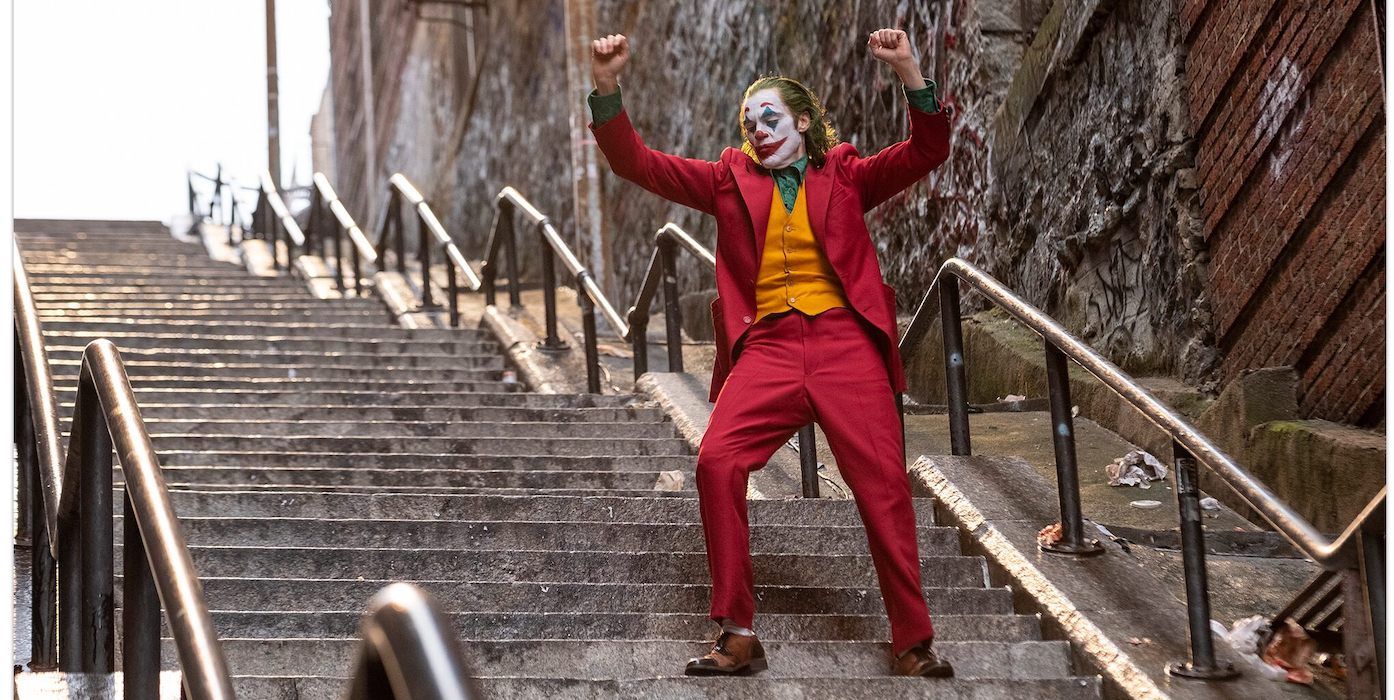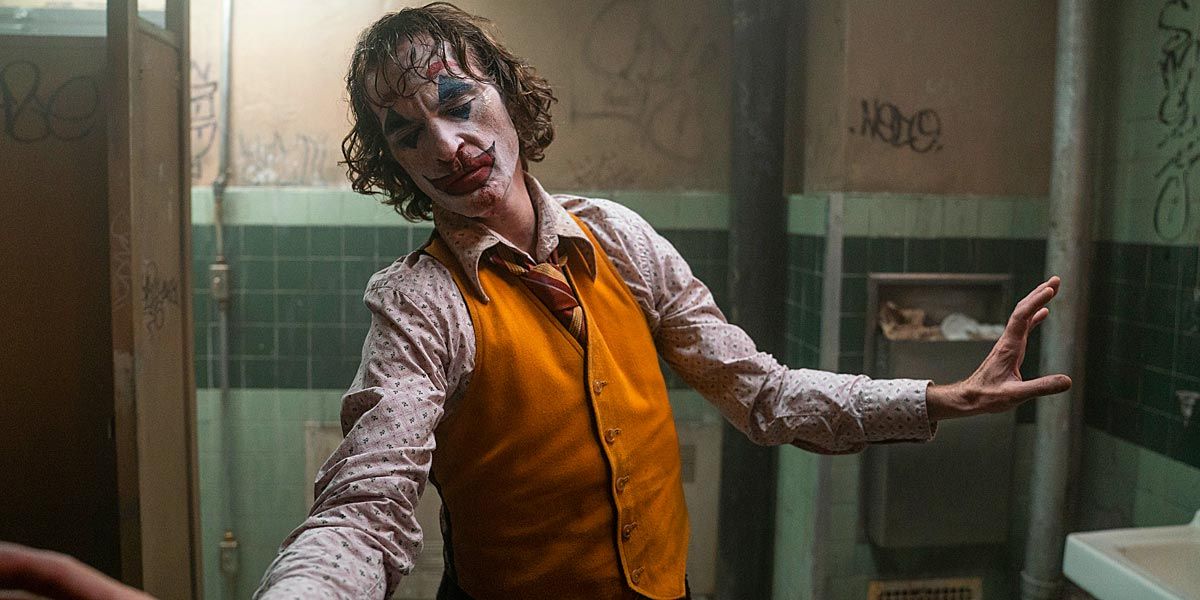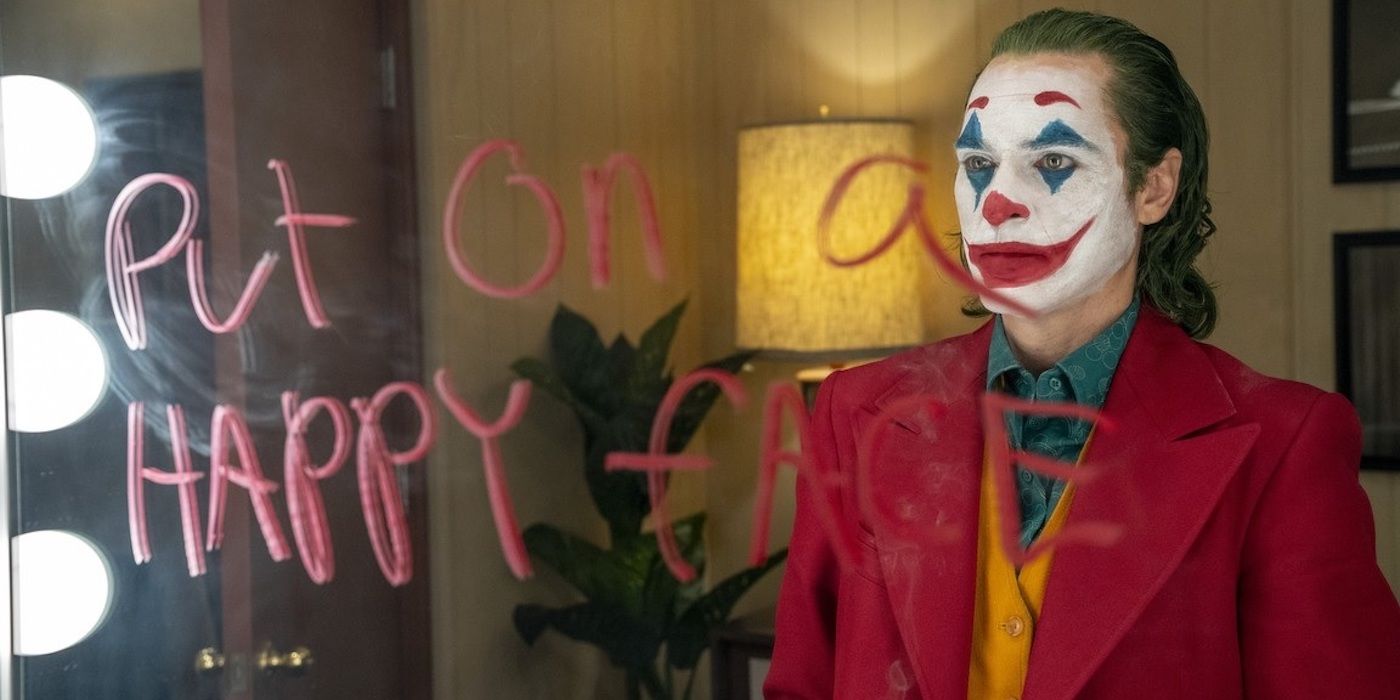WARNING: The following contains spoilers for director Todd Phillips' Joker, in theaters now.
The lead-up to the release of director Todd Phillips' Joker was fraught with controversy, with some critics concerned the film's subject matter could inspire real-life violence. Multiple screenings at a Los Angeles theater were canceled after a "credible threat" was reported to police, while the Alamo Drafthouse chain in Texax increased security for showings of the film. The New York Police Department also placed undercover officers at screenings to ensure moviegoers' safety if an incident occurred.
Phillips' Joker seeks to create a plausible backstory for the iconic supervillain that goes on to become one of Batman's greatest foes. In the film, audiences learn more about Arthur Fleck, portrayed here by the immeasurably talented Joaquin Phoenix. Arthur is a severely mentally ill and impoverished man living in Gotham City, where he works as a clown for hire and dreams of becoming a stand-up comedian. Arthur lives in a run-down apartment where he cares for his mother, Penny, who audiences later learn also suffers from significant mental illness.
While the film attempts to craft an important message about mental illness -- that society needs to treat those suffering from them better -- Phillips only manages to undermine that message with a collection of poor directorial decisions throughout the film. It's these decisions that reinforced the controversy and the fears that surrounded the film ahead of its release.
One such decision comes as the film nears its climax, just as Arthur finalizes his transformation into The Joker. The unquestionably poor directorial decision in this moment was the choice to use Gary Glitter's "Rock and Roll (Part 2)" as the musical accompaniment to Arthur dancing down the stairwell on his way to his appearance on Murray Franklin's talk show.
What made "Rock and Roll (Part 2)" such a poor choice is what directly preceded this scene. Arthur, having just murdered his mother in her hospital bed, receives a visit from two former colleagues, Randall and Gary, while he is getting ready for his talk show appearance. Arthur kills Randall with a pair of scissors but allows Gary to leave as Gary had always treated Arthur nicely. Randall, on the other hand, was instrumental in Arthur losing his job after Randall gave Arthur the gun he used to kill three young Wayne Enterprises employees who attacked him on a subway train. After Gary's departure, Arthur leaves his apartment to the tune of Glitter's "Rock and Roll (Part 2)," dancing his way down the stairwell of his building before being hailed by the two detectives who've been trying to question him.
Much like Chumbawumba's "Tubthumping," "Rock and Roll (Part 2)" is one of those songs that most people have heard many times but wouldn't be able to name. "Rock and Roll (Part 2)" has most often been associated with large sporting events where it has been used as a means of pumping up a crowd at a critical juncture. In many sporting circles, "Rock and Roll (Part 2)" is simply known as "The 'Hey' Song," as "Hey" is the only lyric heard throughout.
As a side note, the use of "Rock and Roll (Part 2)" at sporting events has decreased due to Glitter's multiple convictions as a sex offender. In fact, its use has been banned by the NFL.
Utilizing a song with that type of history glorifies Arthur's violent actions and suggests that the audience should be excited that Arthur has finally become The Joker. However, audiences are also acutely aware that Arthur's appearance on Murray's show isn't going to end well. The audience has just seen Arthur's rehearsals for his appearance on the show, in which he practices a "joke" where the punchline is him committing suicide. It is obvious, then, that Arthur is intending on more violence, whether self-inflicted or towards someone else. Ultimately, it ends up being toward someone else, as Arthur kills Murray for his final "joke" of the evening.
Phillips' decision to use "Rock and Roll (Part 2)" in that moment is a deeply uncomfortable choice -- and a shockingly tone-deaf one at that. The film, on the whole, makes for rather uncomfortable viewing, which can be said of psychological thrillers in general. But "Rock and Roll (Part 2)'s" inclusion is uncomfortable on a completely different level to that of the rest of the film. It is not remotely in line with the tone the film needs at that crucial moment.
The type of character study that Phillips' attempts to make with Joker has its place in the world of cinema, of that there should be no question. With that being said, though, these type of character studies require a deft hand behind the camera, one that is able to handle the darkest and most troubling aspects of a character with the nuance and care that they demand. With his use of "Rock and Roll (Part 2)" at such a critical moment, Phillips failed to achieve the level of nuance that Joker required. As a result, he undermined the important message the film tries to convey, while reinforcing the fears that surrounded the film ahead of its release.
Directed by Todd Phillips, Joker stars Joaquin Phoenix, Robert De Niro, Zazie Beetz, Bill Camp, Frances Conroy, Brett Cullen, Glenn Fleshler, Douglas Hodge, Marc Maron, Josh Pais and Shea Whigham.



